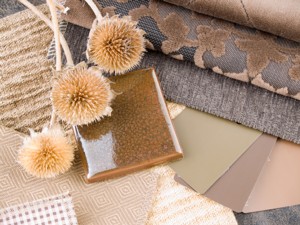
Director of The School of Colour and Design Australia
What are some of the emerging trends in interiors?
Divide and conquer — reversal of open-plan living to separate spaces for specific activities. But separation is temporary with screens, pull-out walls and use of glass for this trend. For example: “I am sick of guests seeing the mess in my kitchen. I want space and time away from the noise of living. Kids are great — but adult time is precious.” Disposable decorating. Low-cost furniture, specialist consultants in styling and colour, Chinese manufacturing, and the need for stimulation and creativity all contribute to this trend.
In what way can we revamp our living spaces?
Changes in decorating styles can be done very effectively by replacing or revamping furniture, changing colour and using accessories effectively. Gone are the days when we decorated in one style that was “ours” forever. We may have a Classical theme that is replaced by a Bohemian one two years later. We change as people throughout our lives, so our environment is likely to change with us. Our needs change. Empty nesters no longer need a four-bedroom house with all the furniture, linen, crockery. They want to travel and live easy no-fuss lives without gardens to tend and children to mind.
What are the latest colour trends?
White Wash is a new colour trend and is the ‘palette cleanser’ in design. The huge variety of white paints on the market has allowed white to become the new colour palette. Subtle changes in whites with soft grey, green, blue or orange bases create a neutral canvas on which to decorate in bolder colours. Texture plays a key role in this palette, with one colour often being used in three-textured surfaces.
New Aged is a design and styling trend from Paris — newly manufactured faux “antiques” mixed with contemporary design styles and juxtaposed with very minimalist memory items. Mixing authentic antiques with fake ones, such as a Louis XIV chair upholstered in a large contemporary print fabric set in a modern house.
Minimalist Memory is where we decorate with simple, single objects that have a particular meaning for the individual — travel mementos, quaint objects, children’s art, grandma’s vase etc. This style is not cluttered at all, with space left for memories around the object. This is combined with a renewed interest in vintage objects.
Divide and conquer — reversal of open-plan living to separate spaces for specific activities. But separation is temporary with screens, pull-out walls and use of glass for this trend. For example: “I am sick of guests seeing the mess in my kitchen. I want space and time away from the noise of living. Kids are great — but adult time is precious.” Disposable decorating. Low-cost furniture, specialist consultants in styling and colour, Chinese manufacturing, and the need for stimulation and creativity all contribute to this trend. Changes in decorating styles can be done very effectively by replacing or revamping furniture, changing colour and using accessories effectively. Gone are the days when we decorated in one style that was “ours” forever. We may have a Classical theme that is replaced by a Bohemian one two years later. We change as people throughout our lives, so our environment is likely to change with us. Our needs change. Empty nesters no longer need a four-bedroom house with all the furniture, linen, crockery. They want to travel and live easy no-fuss lives without gardens to tend and children to mind. White Wash is a new colour trend and is the ‘palette cleanser’ in design. The huge variety of white paints on the market has allowed white to become the new colour palette. Subtle changes in whites with soft grey, green, blue or orange bases create a neutral canvas on which to decorate in bolder colours. Texture plays a key role in this palette, with one colour often being used in three-textured surfaces. New Aged is a design and styling trend from Paris — newly manufactured faux “antiques” mixed with contemporary design styles and juxtaposed with very minimalist memory items. Mixing authentic antiques with fake ones, such as a Louis XIV chair upholstered in a large contemporary print fabric set in a modern house. Minimalist Memory is where we decorate with simple, single objects that have a particular meaning for the individual — travel mementos, quaint objects, children’s art, grandma’s vase etc. This style is not cluttered at all, with space left for memories around the object. This is combined with a renewed interest in vintage objects.






